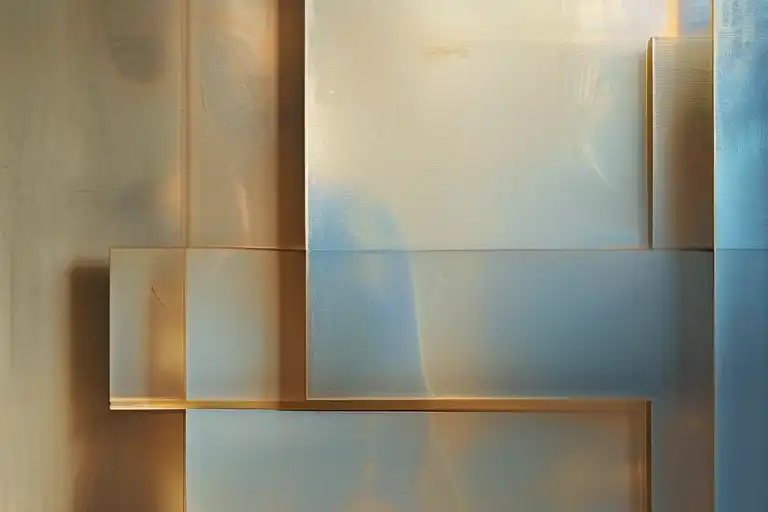I just read this somewhere:
“Sometimes people are beautiful.
Not in looks.
Not in what they say.
Just in what they are.”
And it stayed with me.
Because it’s true.
Those words aren’t just pretty—they hold something real. Something that makes you stop and think.
We live in a world where beauty is often measured by likes, filters, and angles. Where we believe that to be beautiful is to be flawless, photogenic, or perfectly put together. But that quote? It reminded me of something deeper.
It reminded me of the people I’ve met—the ones who changed the way I see the world.
And not because of how they looked.
Not because of the words they said, either.
But because of something you can’t capture in a photo.
Something you can’t explain in one sentence.
Something you only feel.
They were beautiful… just in the way they were.
The Kind of Beauty That Stays
Not the kind of beauty that fades when the lights turn off.
Not the kind that needs validation or applause.
Not the kind that lives in someone’s front-facing camera.
In this age of curated perfection and digital personas, we’ve somehow lost the language for that other kind of beauty—the one that doesn’t photograph well but lingers in memory long after the moment passes. It’s the warmth in someone’s presence that makes you feel seen without them saying a word. The quiet dignity in how they carry themselves through difficult times. The way their authenticity makes your own defenses soften.
I’ve been thinking about what true beauty really means when stripped of all the external markers we’ve been taught to value. The beauty industry would have us believe it’s something we can purchase, apply, or achieve through enough effort. Social media suggests it’s about finding the right angles, filters, and lighting. But the most beautiful people I’ve known often had little interest in any of that.
There was my grandmother’s neighbor who grew flowers not for show but because she believed every street deserved beauty. She’d leave bouquets on porches without notes, never taking credit. The high school teacher who saw potential in students everyone else had dismissed, seeing beauty where others saw only problems. The friend who shows up exactly as she is, flaws and all, giving others permission to do the same.
These people possessed a quality that can’t be bought or manufactured—an inner beauty that radiates from how they move through the world, how they treat others, how they respond to life’s challenges. Their beauty lives in the small choices: patience instead of frustration, kindness instead of judgment, courage instead of fear.
This authenticity seems increasingly rare in a world that rewards performance over substance. We’ve created entire economies around making people feel inadequate about their natural appearance while ignoring the qualities that actually make humans beautiful to one another. The laugh lines that show a life fully lived. The hands that have worked and comforted and created. The eyes that have witnessed both joy and sorrow.
Maybe we need to reclaim beauty from the commercial forces that have narrowed its definition to something skin-deep and easily marketable. Perhaps real beauty has less to do with symmetry and more to do with soul—with how someone makes others feel, what they contribute to the world, who they become under pressure.
The most beautiful people often don’t know they’re beautiful in this deeper sense. They’re too busy being fully present in their lives to worry about how they appear to others. Their beauty emerges naturally from living according to their values, from caring about things beyond themselves, from embracing both their strengths and imperfections.
In a culture obsessed with surface-level perfection, choosing authenticity becomes a radical act of beauty. It means showing up as your whole self, not just the polished parts. It means valuing connection over presentation, substance over style, being over appearing.
That quote stayed with me because it put words to something I’ve felt but struggled to articulate—that the most compelling beauty isn’t something you see with your eyes but experience with your whole being. It’s not about meeting standards but about radiating something genuine from within.
As we navigate this filtered world, perhaps the most important question isn’t how to become more beautiful but how to recognize the real beauty already around us—and within us.
Redefining Beauty: An Exploration Beyond the Surface
We’ve been conditioned to believe beauty lives in symmetry, in flawless skin, in the right angles and perfect lighting. Social media didn’t create this obsession with external perfection—it merely amplified it, gave it metrics, turned beauty into something that could be quantified, compared, and ultimately, commodified. The rise of filter culture didn’t invent our insecurities; it simply gave them a new language and a brighter, more unforgiving stage.
This external focus creates a peculiar emptiness. We chase after something that by its very nature is temporary, subjective, and often completely outside our control. The glow of a screen illuminates our faces but can sometimes cast the most important parts of us into shadow. We become curators of a surface-level existence, forgetting that the deepest beauty often resides in the messy, unphotographed, and perfectly imperfect parts of human experience.
True beauty—the kind that lingers in your memory long after an encounter, that changes how you move through the world—isn’t found in these external validations. It’s something quieter, more subtle. It’s in the way someone listens with their whole being, not just waiting for their turn to speak. It’s in the gentle acceptance they extend to others, and perhaps more importantly, to themselves. It’s in the integrity that guides their choices when nobody is watching, the compassion that costs them something to give, the courage to be vulnerable in a world that often rewards armor.
This inner beauty possesses certain qualities that distinguish it from its superficial counterpart. It’s consistent—it doesn’t fade with changing trends or bad lighting. It’s authentic—it can’t be manufactured or filtered. It’s connective—it creates bridges between people rather than hierarchies. And perhaps most importantly, it’s generative—it doesn’t diminish when shared but rather multiplies, creating more beauty in its wake.
The difference between external and internal beauty isn’t just philosophical; it’s experiential. External beauty often asks “How do I look?” while internal beauty wonders “How do I make others feel?” One is primarily concerned with reception, the other with connection. One can be captured in a photograph; the other can only be felt in a presence. One might open doors, but the other builds homes within human hearts.
This isn’t to dismiss the pleasure of visual beauty or self-care practices that make us feel good in our skin. The physical world matters. But when we mistake the container for the content, the wrapping for the gift, we miss everything that actually nourishes us. We starve while staring at beautifully decorated but empty plates.
The journey toward recognizing true beauty begins with questioning what we’ve been taught to see. It requires looking past the surface, developing what might be called a deeper aesthetic sense—one that appreciates character lines as much as smooth skin, that values the light in someone’s eyes more than the perfection of their features, that recognizes the beauty in authenticity over the glamour of performance.
This redefinition isn’t just personal; it’s quietly revolutionary. In a world that often values the quick glance over the long look, choosing to see deeper beauty becomes an act of resistance. It’s a commitment to valuing what lasts over what dazzles, what connects over what impresses, what is real over what is merely polished.
The Quiet Power of Presence
There’s a woman at my local grocery store who has never said more than “paper or plastic?” to me in five years of weekly interactions. She moves with a peculiar grace—not the practiced kind you see in dance studios, but the unstudied rhythm of someone completely at home in their own skin. Her eyes hold a peculiar quality of really seeing you, not scanning you. When your groceries move along the conveyor belt, her hands arrange them with a mindful care that feels almost reverent. She doesn’t smile excessively or make small talk, yet her checkout lane always has this peculiar calmness that makes people unconsciously choose it over others.
This woman possesses what I’ve come to recognize as authentic presence—the kind of beauty that has nothing to do with symmetrical features or fashionable clothing. It’s in the way she handles bruised apples with the same respect as perfect ones, how she makes eye contact that actually connects rather than glances. Her beauty lives in the space between actions, in the quality of attention she gives to mundane tasks. Customers leave her lane feeling strangely acknowledged, as if they’ve been witnessed rather than processed.
Strength That Doesn’t Need to Shout
My neighbor lost his wife of forty years last spring. What I witnessed in the months that followed wasn’t dramatic grief or visible collapse, but something far more profound. Every morning at precisely 6:30 AM, he would emerge from his house to tend the rose garden his wife had planted decades earlier. His hands, gnarled with arthritis, would move with painstaking care among the thorns. He never missed a day, even when rain fell in sheets or when grief must have made rising from bed feel impossible.
There was no audience for this devotion, no social media posts about his loss or his dedication. The beauty was in the silent fidelity to love beyond death, in the daily choice to honor someone by caring for what they loved. Those roses bloomed with extraordinary vigor that summer, as if responding to the quality of attention they received. The beauty here wasn’t in overcoming grief—it was in the quiet integration of loss into life, the unspectacular courage of continuing to care for something beautiful when beauty feels meaningless.
The Geometry of Kindness
I once watched a young barista handle a difficult customer with such genuine grace that it changed my understanding of patience. The customer was complaining about a coffee that had apparently been made wrong three times, his voice sharp with frustration. Instead of becoming defensive or artificially sweet, the barista listened completely—not just to the words, but to the frustration beneath them. She said, “It sounds like you’ve had a really rough morning. Let me make this right for you.”
What made this beautiful wasn’t the resolution of the coffee issue, but the quality of her attention. She saw the human behind the complaint, the bad day behind the harsh words. Her response contained no resentment, no mechanical customer service patter—just genuine human connection. After the customer left, slightly abashed and now holding a perfect coffee, the atmosphere in the café seemed subtly altered. Other customers interacted with more patience, spoke with more kindness. Beauty of this nature is contagious in the quietest way possible.
The Courage of Consistency
An elderly librarian in my town has been recommending books to children for thirty years. She remembers every child’s name, their reading level, what makes them light up. When a reluctant reader comes in, she doesn’t push—she observes. She notices which covers they glance at twice, which topics make them lean forward slightly. Her recommendations are never about what children should read, but what might secretly delight them.
I’ve seen her with a struggling reader who hated books. Over weeks, she left graphic novels casually displayed where he’d see them. Then manga. Then novels with illustrations. Now that boy comes in weekly, talking excitedly about stories. The beauty here isn’t in dramatic transformation—it’s in the patient, consistent belief in every child’s potential to find joy in reading. Her impact is measured not in viral moments but in generations of readers who discovered themselves through books she subtly guided them toward.
These ordinary examples share a common thread—they represent beauty that exists without self-awareness, without need for recognition. The grocery clerk isn’t trying to be mindful—she simply is. The widower isn’t performing devotion—he’s living it. The barista isn’t practicing empathy—she’s embodying it. The librarian isn’t tracking her impact—she’s too busy making it.
This is the beauty that lingers in memory long after more spectacular displays fade. It’s the beauty of alignment—when actions match values without needing to announce either. These people remind us that the most profound beauty often wears ordinary clothing, performs mundane tasks, and speaks in quiet tones. Their power lies in their authenticity, in the unselfconscious expression of who they are at their core.
Perhaps this is why we remember such people—not because they impressed us, but because they made us feel more human in their presence. They didn’t show us how to be beautiful; they showed us how to be, beautifully.
Recognizing Your Own Beauty: The Journey to Self-Value
We’ve explored what true beauty means beyond the surface, and seen how it manifests in others. Now comes the most challenging yet rewarding part: turning that gaze inward. This isn’t about finding something that isn’t there—it’s about recognizing what has been there all along, obscured by layers of external expectations and self-doubt.
The Inner Beauty Inventory
Take a quiet moment with these questions. Don’t rush to answer them—let them sit with you. There are no right or wrong responses, only honest ones.
What makes you feel most authentically yourself? Not your most productive self, or your most impressive self, but the version that requires no performance, no mask.
When have you shown kindness without expectation of recognition? Recall those small, unnoticed moments where you acted from genuine care rather than social obligation.
What qualities do others consistently appreciate in you that you tend to minimize? We often dismiss compliments about traits that come naturally to us, precisely because they feel effortless and therefore unremarkable.
How do you handle adversity when no one is watching? Character isn’t built in the spotlight but in the quiet moments of struggle.
What brings you joy that has nothing to do with external validation? Those activities that make time disappear because they connect to something essential within you.
Breaking the Mirror of External Validation
We’ve been taught to see ourselves through others’ eyes, to measure our worth by metrics that have nothing to do with our essence. The number of likes, the approving comments, the visible achievements—these become the mirrors in which we seek our reflection. But they’re distorted mirrors, showing only fragments, and often reflecting back what we think others want to see rather than who we actually are.
The process of dismantling this external dependency begins with recognizing its patterns. Notice when you’re performing rather than being. Catch yourself editing your authenticity to fit perceived expectations. These moments of awareness create tiny cracks in the facade, allowing your genuine self to emerge.
The Practice of Gentle Attention
Start paying attention to yourself with the same gentle curiosity you might extend to a fascinating stranger. Notice your automatic reactions without judgment. Observe how you speak to yourself in challenging moments. The goal isn’t to criticize but to understand—to become familiar with the landscape of your inner world.
When you make a mistake, observe your internal response. Is it harsh criticism or compassionate understanding? The way we treat ourselves in vulnerable moments reveals much about our relationship with our own worth.
Rediscovering What You Already Are
Authentic self-worth isn’t something you need to build from scratch—it’s more often about removing what covers it. Like archaeologists carefully brushing away dust from ancient artifacts, we need to gently remove layers of conditioning, comparison, and criticism to reveal what’s been there all along.
Think back to childhood, before you learned to see yourself through society’s measuring stick. What did you love doing? What made you laugh? What felt naturally right? These clues point toward your essential nature, the core that remains unchanged beneath accumulated layers of adaptation.
The Courage of Imperfection
True self-acceptance requires embracing what we often consider flaws—the quirks, vulnerabilities, and imperfections that make us human. That nervous habit, the way you laugh too loudly, your tendency to care too deeply—these aren’t defects to be fixed but characteristics that make you uniquely you.
The parts of ourselves we try to hide often contain our greatest gifts. That sensitivity you see as weakness might be the source of your empathy. Your stubbornness might be perseverance in disguise. Your apparent flaws are often strengths waiting to be reframed.
Daily Practices for Self-Recognition
Keep a small notebook for a week where you jot down moments you felt genuinely yourself. Not necessarily happy or successful moments—just times when you weren’t performing or pretending. Patterns will emerge.
Practice receiving compliments without deflection. Simply say “thank you” and let the words settle. Notice the discomfort—that’s where growth happens.
At day’s end, recall one thing you did that aligned with your values, however small. Making someone smile, choosing patience over irritation, creating something meaningful.
Spend time with people who seem to see you more clearly than you see yourself. Their reflections can help recalibrate your self-perception.
The Unmeasurable Qualities
We live in a world obsessed with metrics, but the most valuable aspects of ourselves defy measurement. How do you quantify kindness? How do you measure presence? How do you data-analyze authenticity?
Your worth isn’t a number on a scale, a salary figure, or a social media following. It’s in the quality of your attention when someone speaks. It’s in the integrity you maintain when no one watches. It’s in the courage to be vulnerable when pretending would be easier.
The Ongoing Conversation
This journey of self-recognition isn’t a destination but an ongoing conversation. Some days you’ll feel connected to your worth; other days it will feel distant. Both are part of the process. The goal isn’t constant self-assurance but the ability to return to self-compassion when you stray.
Remember that the beauty you appreciate in others exists within you too—not in the same form, but in your unique expression. Your particular blend of strengths, vulnerabilities, experiences, and perspectives creates a combination that has never existed before and will never exist again.
The work isn’t to become someone different but to become more fully who you already are—to remove whatever prevents you from seeing the beauty that’s been there all along, waiting patiently for your recognition.
Cultivating Inner Beauty: A Practical Guide
Beauty that transcends the superficial doesn’t happen by accident. It emerges from conscious practice, from small daily choices that gradually shape how we move through the world. This isn’t about adding another item to your self-improvement checklist, but about uncovering what’s already there, waiting to be noticed and nurtured.
Mindfulness: The Art of Presence
Mindfulness begins with noticing—really noticing—the texture of your morning coffee, the quality of light through your window, the rhythm of your own breathing. This practice isn’t about achieving some zen-like perfection; it’s about showing up for your own life. When you practice mindfulness, you create space between stimulus and response, and in that space, something beautiful can grow.
Try this: set a timer for three minutes each day. Sit quietly and notice five things you can see, four things you can hear, three things you can touch, two things you can smell, and one thing you can taste. This simple exercise grounds you in your senses, pulling you out of the endless scroll of thoughts about how you should be and into the reality of how you actually are.
Values in Action: Small Choices, Big Impact
Authenticity isn’t a grand declaration but a series of small, consistent choices. It’s choosing to speak up when you’d rather stay silent, or staying quiet when you want to criticize. It’s returning the extra change the cashier accidentally gave you, or taking the time to really listen when someone is sharing something difficult.
These moments don’t make for dramatic Instagram posts, but they accumulate into a life of integrity. Each choice aligned with your values strengthens your sense of self-worth and creates a beauty that has nothing to do with appearance and everything to do with character.
Relationship Building: The Mirror of Connection
The way we interact with others reveals our inner landscape. Beautiful relationships aren’t built on perfect conversations or shared interests alone, but on the willingness to be genuinely curious about another person’s experience. This means listening without planning your response, offering support without keeping score, and showing up even when it’s inconvenient.
Practice asking one genuine question in each conversation today—not “How are you?” but “What’s been occupying your thoughts lately?” or “What brought you joy this week?” These questions create space for real connection, the kind where people feel seen and valued for who they are, not just for what they can offer.
Self-Acceptance: Embracing the Whole Package
Here’s the secret nobody tells you about self-acceptance: it’s not about liking every part of yourself. It’s about acknowledging that all of it—the doubts, the flaws, the awkward moments—belongs. That woman who radiates confidence? She’s not without insecurities; she’s just made peace with their presence.
Start with one thing you usually criticize about yourself. Instead of trying to fix it, try simply noticing it without judgment. See it as part of your humanity rather than a problem to be solved. This shift from rejection to curiosity creates space for a different kind of beauty to emerge—one that doesn’t require perfection to exist.
Integration: Making It Real
These practices aren’t items on a checklist but threads in a tapestry. Some days you’ll weave mindfulness into your commute, other days you’ll practice self-acceptance in the mirror, and sometimes you’ll choose integrity when nobody’s watching. The beauty comes not from perfect execution but from the ongoing intention to show up as your authentic self.
Remember that woman from the coffee shop who had that quality you couldn’t quite name? She probably didn’t wake up that way. She likely cultivated it through thousands of small choices—to be present, to act with integrity, to connect genuinely, to accept herself. And the wonderful, liberating truth is that you can too.
The Revolution of Beauty: From Personal to Social Transformation
Real change often starts quietly, within the quiet spaces of individual consciousness before rippling outward to transform collective understanding. The personal recognition that beauty exists beyond physical appearance creates subtle but profound shifts in how we interact with others and perceive ourselves. This internal recalibration gradually influences our social circles, workplace dynamics, and eventually, the broader cultural conversation about what truly matters in human connection.
When enough individuals begin valuing authenticity over perfection, something remarkable happens: our social environment begins to reflect these changing priorities. We start creating spaces where people feel safe to be genuinely themselves, without the constant pressure to perform or conform to narrow aesthetic standards. This shift manifests in small but significant ways—friends complimenting each other’s kindness rather than appearance, workplaces celebrating collaborative spirit over competitive presentation, and social gatherings becoming less about curated images and more about meaningful connection.
The possibility of building a new aesthetic culture emerges not from top-down directives but from countless individual choices to prioritize substance over surface. This cultural transformation recognizes that beauty isn’t something to be manufactured or purchased but cultivated through genuine human qualities—empathy, integrity, courage, and compassion. It’s a culture that celebrates diversity of character rather than uniformity of appearance, that values emotional resonance over visual perfection.
Social media, often criticized for perpetuating unrealistic beauty standards, simultaneously holds revolutionary potential for redefining beauty. Platforms that once prioritized flawless selfies now see growing movements centered on authenticity, vulnerability, and real human experience. The very tools that enabled filter culture are now being used to dismantle it—through accounts showcasing unretouched images, conversations about mental health, and communities built around shared values rather than shared aesthetics.
This revolution doesn’t require abandoning social media but rather transforming our engagement with it. It means following accounts that inspire rather than intimidate, sharing content that reflects reality rather than fantasy, and using these platforms to connect rather than compare. It involves consciously curating our digital environments to reinforce healthier definitions of beauty and worth.
The most powerful aspect of this transformation is its accessibility. Unlike beauty standards that require specific genetics, wealth, or resources, this new understanding of beauty is available to everyone. It doesn’t demand particular features or possessions but rather qualities that anyone can develop—kindness, presence, authenticity, and courage. This democratization of beauty represents perhaps the most significant shift in how we conceptualize human value and connection.
As this revolution gains momentum, we begin seeing its effects in unexpected places: advertising campaigns featuring “real people” with authentic stories, entertainment celebrating character depth over physical perfection, and educational programs teaching emotional intelligence alongside academic skills. These changes signal a cultural awakening to the understanding that our obsession with external beauty has been limiting our ability to appreciate the deeper, more meaningful aspects of human experience.
The journey from personal realization to social transformation isn’t linear or predictable. It moves at different paces in different communities, facing resistance from entrenched industries that profit from insecurity. Yet the direction seems clear—we’re gradually moving toward a culture that recognizes the profound beauty in being human, in all our imperfect, authentic, and wonderfully diverse expressions.
This revolution invites participation rather than spectatorship. It asks each of us to examine our own definitions of beauty, to challenge our automatic judgments, and to consciously appreciate the non-physical qualities that make people truly remarkable. It encourages us to become architects of a new aesthetic—one that values depth over surface, substance over style, and humanity over perfection.
The Beauty Revolution: From Personal to Social Change
That simple quote we started with—about people being beautiful not in looks or words, but in what they are—contains more than personal wisdom. It holds the seeds of a quiet revolution in how we perceive value in ourselves and others.
When we begin to see beauty differently in our own lives, something shifts in how we move through the world. We stop seeking validation from external sources and start recognizing worth in unexpected places. The cashier who patiently helps a confused elderly person, the neighbor who shovels snow from someone’s driveway without being asked, the friend who listens without trying to fix—these moments become visible in a new light.
This personal transformation naturally ripples outward. As we value different qualities in people, we unconsciously begin to celebrate them. We compliment someone’s patience instead of their outfit, appreciate someone’s integrity rather than their Instagram aesthetic. These small acknowledgments create micro-shifts in our social circles, gradually building a culture that values substance over surface.
Social media, often blamed for creating unrealistic beauty standards, could ironically become the very platform for this revolution. Imagine feeds filled with stories of kindness, courage, and authenticity instead of perfected images. Already we see glimpses of this—viral videos of everyday heroes, conversations about mental health, movements celebrating diverse bodies and abilities. These are not anomalies but signs of a growing hunger for something real.
The most powerful changes often begin quietly, in the space between what we’ve been taught to value and what we genuinely feel matters. That discomfort you might feel when scrolling through filtered perfection? That’s the beginning. That moment when you choose to share something authentic rather than curated? That’s the revolution in action.
This isn’t about rejecting external beauty altogether—there’s joy in aesthetics, in self-expression through appearance. But it’s about expanding our definition to include the qualities that truly sustain us: compassion, integrity, courage, authenticity. It’s about creating a world where a person’s value isn’t measured by their angles but by their angles of character.
What if we started this revolution today? Not with grand gestures, but with small acts of redefinition. Notice someone’s beautiful patience. Acknowledge someone’s beautiful resilience. Compliment someone’s beautiful way of making others feel seen. These small recognitions are like drops of water that gradually wear away the stone of superficial standards.
The change begins where all lasting change begins—in how we see, what we value, and what we choose to celebrate. It starts with recognizing that the most beautiful things are often the most quiet, the most simple, the most real. They don’t need filters because they’re already perfect in their imperfect humanity.
So let’s continue this conversation beyond these words. Let’s carry this expanded definition of beauty into our daily interactions, our social media engagements, our personal expectations. The revolution won’t be televised—it’ll be lived, one authentic moment at a time, in the quiet spaces between what things appear to be and what they truly are.





